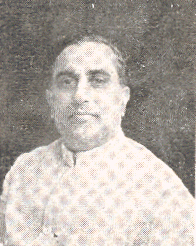| ||||||||||||||||||||||||||||
All 494 seats in the Lok Sabha 248 seats were needed for a majority | ||||||||||||||||||||||||||||
| ||||||||||||||||||||||||||||
| ||||||||||||||||||||||||||||
The Indian general election of 1957 elected the 2nd Lok Sabha of India. The election was held from 24 February to 14 March, just over five years after the previous general election. [1] There were 494 seats elected using first past the post voting system. Out of the 403 constituencies, 91 elected two members, while the remaining 312 elected a single member. [2] [3] The multi-seat constituencies were abolished before the next election.
The Second Lok Sabha was elected after the Indian general election, 1957. The 2st Lok Sabha lasted its full tenure of five years till 1962.

India, also known as the Republic of India, is a country in South Asia. It is the seventh largest country by area and with more than 1.3 billion people, it is the second most populous country as well as the most populous democracy in the world. Bounded by the Indian Ocean on the south, the Arabian Sea on the southwest, and the Bay of Bengal on the southeast, it shares land borders with Pakistan to the west; China, Nepal, and Bhutan to the northeast; and Bangladesh and Myanmar to the east. In the Indian Ocean, India is in the vicinity of Sri Lanka and the Maldives, while its Andaman and Nicobar Islands share a maritime border with Thailand and Indonesia.
Contents
Under the leadership of Jawaharlal Nehru, the Indian National Congress easily won a second term in power, taking 371 of the 494 seats. They gained an extra seven seats (the size of the Lok Sabha had been increased by five) and their vote share increased from 45.0% to 47.8%. The INC won nearly five times more votes than the Communist Party, the second largest party. In addition, 19.3% of the vote and 42 seats went to independent candidates, the highest of any Indian general election.

Pt. Jawaharlal Nehru was a freedom fighter, the first Prime Minister of India and a central figure in Indian politics before and after independence. He emerged as an eminent leader of the Indian independence movement under the tutelage of Mahatma Gandhi and served India as Prime Minister from its establishment as an independent nation in 1947 until his death in 1964. He has been described by the Amar Chitra Katha as the architect of India. He was also known as Pandit Nehru due to his roots with the Kashmiri Pandit community while Indian children knew him as Chacha Nehru.

The Indian National Congress(

The Communist Party of India (CPI) is the oldest communist party in India. There are different views on exactly when it was founded. The date maintained as the foundation day by the CPI is 26 December 1925. The Communist Party of India (Marxist), which separated from the CPI in 1964 following an ideological rift between China and the Soviet Union, continues to claim having been founded in 1925.








